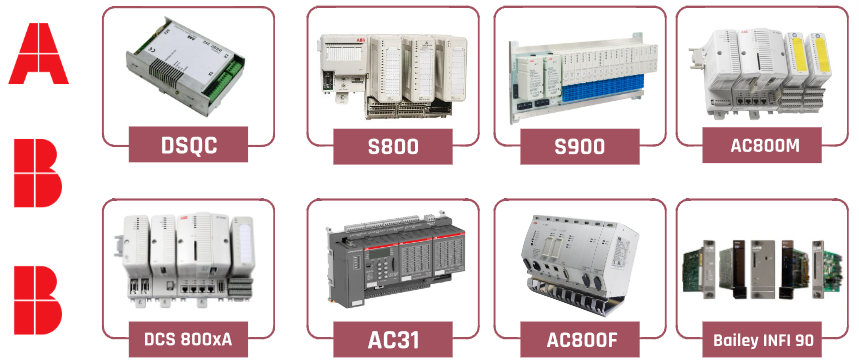The Flame Analysis Unit or FAU810 is ABB's latest cutting-edge flame analysis device. FAU810 is designed from scratch, with maximum flexibility, availability, and reliability. It utilizes the latest technology to make flame analysis as cost-effective as possible, while maintaining ABB's rock solid reputation as the most reliable instrument in the industry.
FAU810 is easy to install and configure, flexible to operate, and uses redundant Profi bus DP-V1 or standard Modbus interface for secure data exchange and adjustment. You can connect any type of ABB flame sensing device to FAU810. This makes FAU810 the standard module for all ABB flame scanner applications and the preferred solution for retrofitting existing installations.
ABB SERIES
FAU810 specification
Each flame analysis unit consists of two independent channels. Each channel can receive and process flame detector signals. These two
detectors can be combined arbitrarily
The following design:
SF810 flame scanning head
All DFS Flame scan heads
Flame rod (ion flame monitoring)
Each Detector is independently configurable from the FAU810 pushbuttons and display, with Flame Explorer engineering tool or
via Profibus.
The FAU810 can be powered by a single or redundant 24 VDC source (+/- 20%).
The FAU810 has built-in diode auctioneering for power source isolation.
Two digital input channels are available for remote parameter switching. One digital input per sensor.
(Example: Parameters for a dedicated Flame Detector may be tailored to monitor either coal or oil firing)
More recommended spare parts
|
F650BABF1G0HIC |
DIMA3-ES-16-MINI |
|
UG440H-TH1 |
RFU630-13105 |
|
BH2114*452831533 |
1404-M805B-ENT |
|
6SN1118-0DJ21-0AA2 |
CDE34.006.W2.4.PC1 |
|
V812iS |
BMI0702T06A |
|
IS7200-01 |
BKSC-4015GS1B-C |
|
V808iSDY |
4PP045.0571-042 |
|
312SC VIPA 312-5BE03 |
6SE7013-0EP50-Z |
|
SPD 3.200-A1-1 |
RYG1.1HA-LP |
|
A5E00023809 A5E00054897 |
6SN1118-1NJ00-0AA2 |
|
A5E00747065 |
4B1270.00-K15 |
|
CACR-JUM25A2A |
MMI-4067AN-R1A160CF2CE6.0 |
|
CACP-JU051D2A |
SPBA-24D24D120LF |
|
CACR-JU028A2A |
1FL6061-1AC61-0LH1 |
|
CACP-JU15A3A |
IM308 6ES5308-3UC21 |
|
CACP-JU22D3A |
JM-603-480-SB1 |
|
VSXC100M03X00EP |
PM583-ETH 1SAP140300R0271 |
Contact Yuki now
Email: sales6@askplc.com
Skype: +86 17359287459
WhatsApp: +86 17359287459




